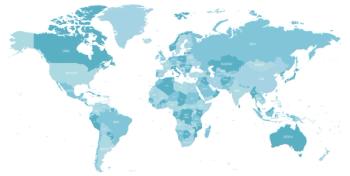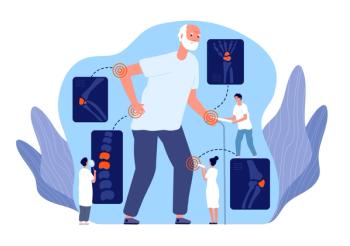
"Beyond A1C" Pinpoints Metrics That Matter to Patients for Future FDA Approvals
Luminaries from the worlds of research, regulation, and advocacy in diabetes gathered in Bethesda, Maryland, to discuss what future rules for drug and device approvals might look like if things like hypoglycemia and time in range had consideration.
In diabetes care, measurement of glycated hemoglobin (A1C), which reflects a 3-month average of blood glucose levels, is the benchmark for tracking everything from how well a patient is doing on a regimen to how well a health system is caring for its population.
For FDA, the A1C is the gold standard for measuring whether therapies or devices help people with diabetes manage the disease. But for patients, it’s not the whole story: A1C tells nothing about how they are doing throughout the day. If FDA is to weigh other metrics, however, what would they be? Could professional groups agree on standards? And how would these new measures be put into practice?
On Friday, the diaTribe Foundation convened luminaries in diabetes research, regulation, and advocacy for a daylong session, “Glycemic Outcomes Beyond A1C: Standardization and Implementation.” The session, led by diaTribe Founder and Chair Kelly Close, was a follow-up to
There’s consensus that FDA should measure how well drugs and devices control hypoglycemia and time in range, and based on Friday’s meeting, there’s growing support for use of continuous glucose monitoring (CGM) to gather data in clinical trials. Attendees also discussed whether FDA should measure patients’ ability to get more consecutive hours of sleep, since artificial pancreas technology offers this promise.
“We all know the very high dangers of hypoglycemia, but only by speaking with one voice—as researchers, clinicians, and patients, with leaders from different professional organizations—can we stay ahead of those dangers,” Close said in an email. “To achieve that, we hope that CGM is used more often in clinical trials, and then that information is used to guide care for patients. If our goal is to improve outcomes at lower costs—and minimize hypoglycemia-- that path will take us there.”
Not only does reducing hypoglycemia and improving time in range lead to health oud safety outcomes, but these factors matter to patients and caregivers, and could lead to better quality of life. Richard Wood of d Q&A (which stands for diabetes Q&A) presented data from 3455 patients, with type 1 diabetes (T1D) and type 2 diabetes (T2D), some of whom used insulin and some of whom did not, and the reports on quality of life were dismal. “Fewer than a third of the patients feel their diabetes care is very successful,” Wood said. “It’s clear we have a lot of work to do, despite all the therapies we have today.”
As one patient said in the survey, “Time in range defines my daily experience.”
This hardly means that A1C is meaningless. As Robert Rather, MD, FACP FACE, the retired chief scientific and medical officer for the American Diabetes Association (ADA) explained, the landmark Diabetes Control and Complications Trial found that a 2% reduction in A1C was associated with a 60% reduction in retinopathy, nephropathy, and neuropathy. But as has been seen in trials since that time, reductions in A1C don’t always translate into macrovascular benefits,
Friday’s meeting featured researchers and regulators from Europe; diaTribe seeks to foster alignment between FDA and the European Medicines Agency so pharmaceutical and medical device companies developing new metrics will have a common set of standards.
The rising role of technology was clear. ADA’s Chief Scientific and Medical Officer William T. Cefalu, MD, said that the 2018 Standards of Medical Care in Diabetes will include a separate chapter on technology for the first time.
Philip Home, DPhil, of Newcastle University in the United Kingdom, said if CGM is to be used in research, issues arise about ensuring it is calibrated. If hypoglycemia is a metric, how do regulators define an event? If there are several within a short span, do they count as single incident?
Bart Van der Schueren, PhD, of the EMA, discussed that agency’s efforts to update metrics, and said there is definitely a preference for including CGM data with applications, and not just for T1D approvals. Even a week’s worth of data for T2D approvals offers insight about glucose variability he said.
The EMA is still exploring patient-reported outcomes, Van der Shueren said, but has not yet seen a validated measure it’s ready to adopt.
The for alignment isn’t about pleasing pharmaceutical companies. “We want companies to please patients,” he said. To hold down costs and speed development, “There is a need to align internationally.”
Afternoon sessions were set up as workshops to discuss the future of clinical trials and make concrete recommendations to FDA. Questions discussed included:
- Should hypoglycemia be an efficacy outcome instead of a safety outcome for US regulators?
- Should CGM be required for an entire trial, or just for 14-day periods at the beginning and the end?
- What is the definition of non-severe hypoglycemia?
- What can be done about patients with hypoglycemia unawareness?
Newsletter
Stay ahead of policy, cost, and value—subscribe to AJMC for expert insights at the intersection of clinical care and health economics.














































